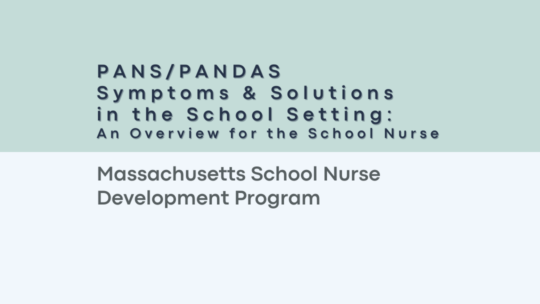
Massachusetts School Nurse Program on PANS/PANDAS
Presentation Details PANS/PANDAS Symptoms and Solutions in the School Setting: An Overview for the School Nurse Presenter: Gabriella True, ASPIRE President Addendum Topic: Massachusetts...

We know about PANS/PANDAS. We need the rest of the world to catch up.
We know about PANS/PANDAS. We need the rest of the world to catch up. Let’s talk about sharing our story and advocacy on PANS PANDAS Awareness Day I am not...

Everything changed at 4
We wish nothing but healing wishes for Stori. Stori’s mom shared her story with us on the day of PANS PANDAS Awareness Action Week, when we shared many stories....

I’m determined to educate people about this illness
Not feeling alone is sometimes one of the most important parts of our PANS/PANDAS journey. I am so glad this brave 11th grader shared her story. Others see she...

Sudden onset and Tick-Borne illness does happen
Often we only think of tick-borne illnesses, like Lyme disease, as having a slow, gradual onset. We see acute physical symptoms and then months later we see neurologic or...

Susan Swedo, MD – The importance of prompt recognition and appropriate treatment of PANS/PANDAS
If the embedded video link does not play on this page, please watch directly on YouTube. Symposiums ASPIRE was invited by the Associazione Genitori Pans Pandas Bge Organizzazione...

The importance of feeling validated and finding community
After being at a play date where a mother informed me that her brother was a neurologist and we should look into PANDAS, I had no idea where to...

Not “just” ADHD
Just like Holden, parents often hear about PANS/PANDAS through word of mouth or knowing a family with a kiddo already diagnosed. So, keep talking about PANS/PANDAS wherever you go....

A Story of Restricted Eating and Binging (and a little cake baking)
My son’s PANDAS journey began the way that most others have. B was in first grade, and one day he was our silly, mischievous, bright child; the next he...

So Much More Than the Terrible Twos
“Oh, but he has always been like that”. Often, that is what parents hear from dismissive providers or family members when they start discussing whether their child’s...

Finally back in school and feeling better!
After you read this story, imagine what it is like for all those children who are not diagnosed correctly. You can paint a pretty bleak picture in your mind...